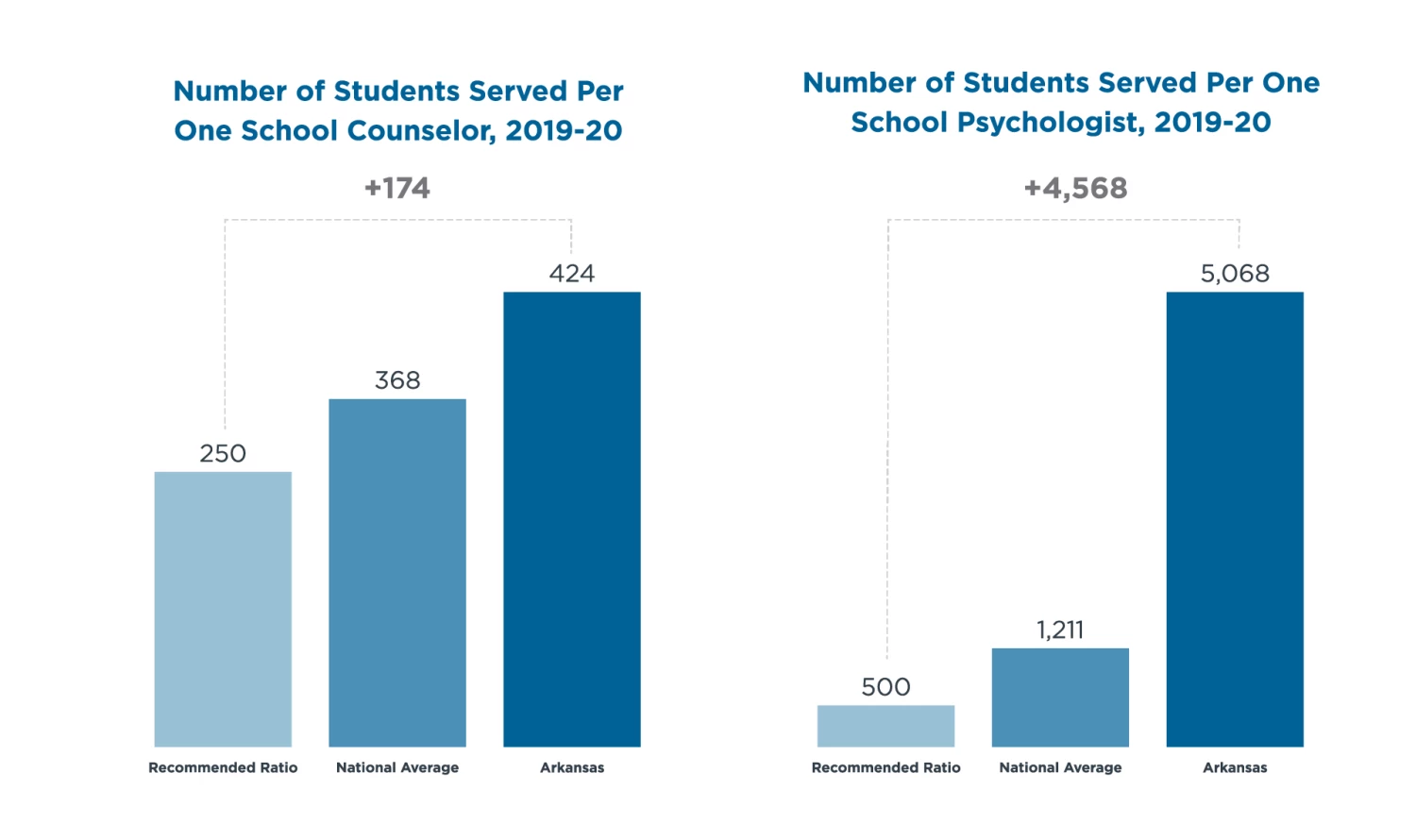Recommendation
Develop coordinated state-level strategies to more efficiently connect schools with agencies, partners, and resources to create supportive educational environments and provide services that meet the health and wellness needs of all students.
Context and Arkansas Progress
Many students come to school with significant needs associated with factors outside the education system, including health, trauma, economic, and safety concerns. High levels of families living in poverty and rising crime rates impact learning and students’ ability to make progress toward key milestones. Student mental health needs were increasing pre-pandemic and have been exacerbated by COVID-related trauma.
Physical and mental health needs in students often manifest as behavioral issues in schools that then impact the wellbeing and learning of all students. Teachers, who are largely not trained to address the deeper needs underpinning behavioral issues, are often the first to respond to these needs. Of Arkansans surveyed, only 45% believe schools currently meet student mental health needs. On average, a school counselor or psychologist in Arkansas supports significantly more students than is recommended or than in other states.

While schools and school staff must be better equipped and trained to identify and respond to issues of student well-being and create environments that foster safety and belonging for all students, they cannot be solely responsible for addressing student health and well-being on top of their core role of delivering learning. Other agencies and partners must work with schools to provide comprehensive, physical and mental health services to students, especially those in greatest need.
Opportunities for Arkansas
After parents, school staff often spend the most time with kids. The time spent together provides educators with multiple opportunities to identify students' well-being needs and be the first to respond. However, to be effective, schools will need additional support and resources. To the degree possible, the focus of schools and educators should remain on effectively teaching every student. Other agencies, service providers and community partners, who have the necessary expertise and capacity, should own the coordination with schools to help identify, access and direct students in need of support.
In Schools
- Prioritize increased access to counselors, psychologists, and social workers to decrease the number of students served by each health professional.
- Increase trauma-informed training for educators, similar to the work of The Arkansas Trauma Resource Initiative for Schools (TRIS).
- Conduct needs assessments for the health and wellness of students and educators to identify areas of focus.
- Engage parents and families more intentionally to understand student needs and increase awareness of existing services.
Statewide
- Conduct a scan of current policies and funding that impact student mental health services to increase integration and reduce fragmentation across statewide systems.
- Create clear structures within local and state agencies and service providers to engage with districts and identify students in need to coordinate and deliver “wrap-around” services.
- Leverage technology, such as telemedicine, to expand the network of support for students and increase accessibility in regions where services are limited.
- Increase communication and engagement with families in high-need communities to address barriers to access such as awareness, stigma, cost, and transportation.
- Prioritize strategies for addressing student health and well-being, creating safe and healthy school environments in educator preparation and ongoing professional development.
